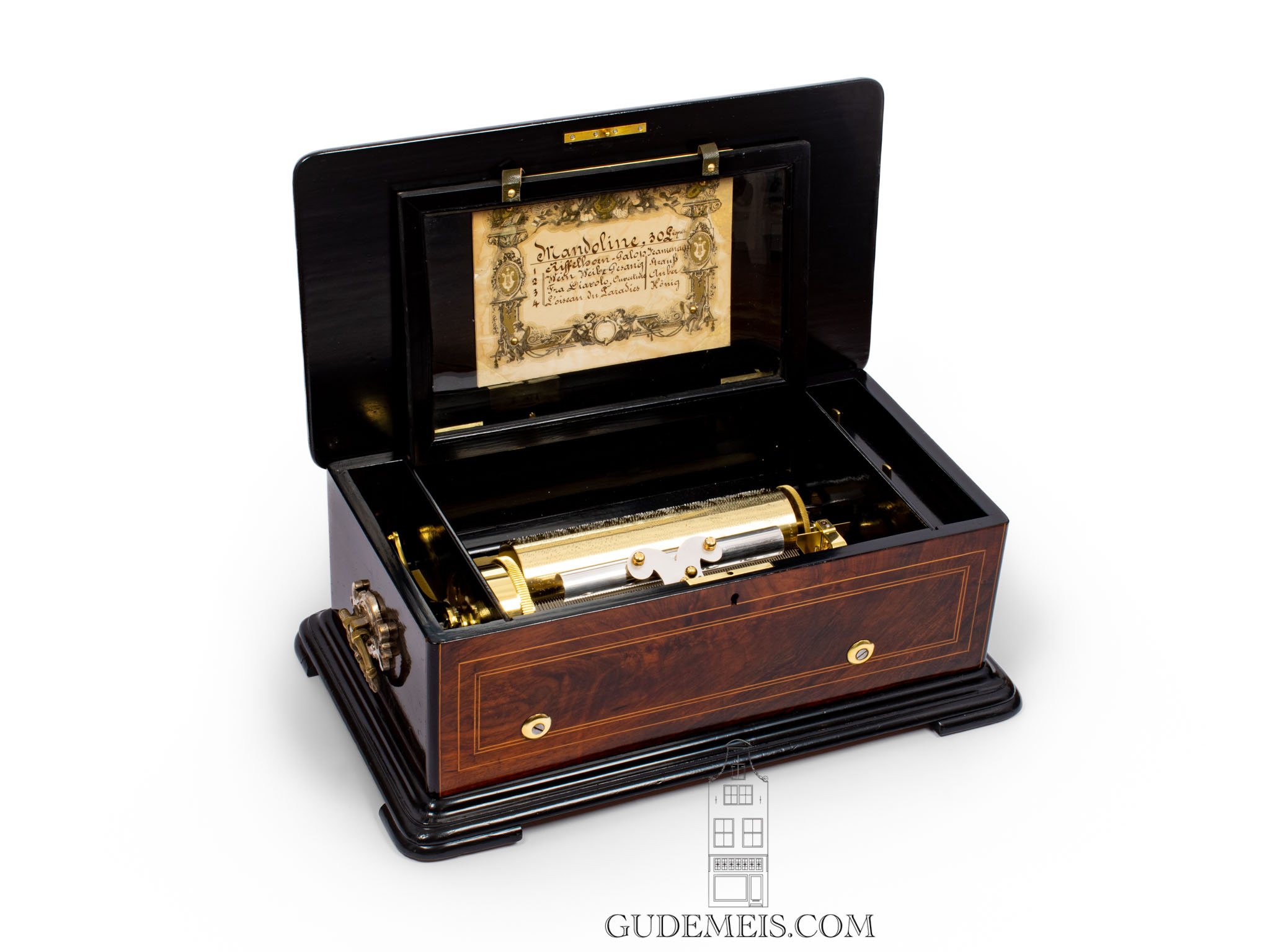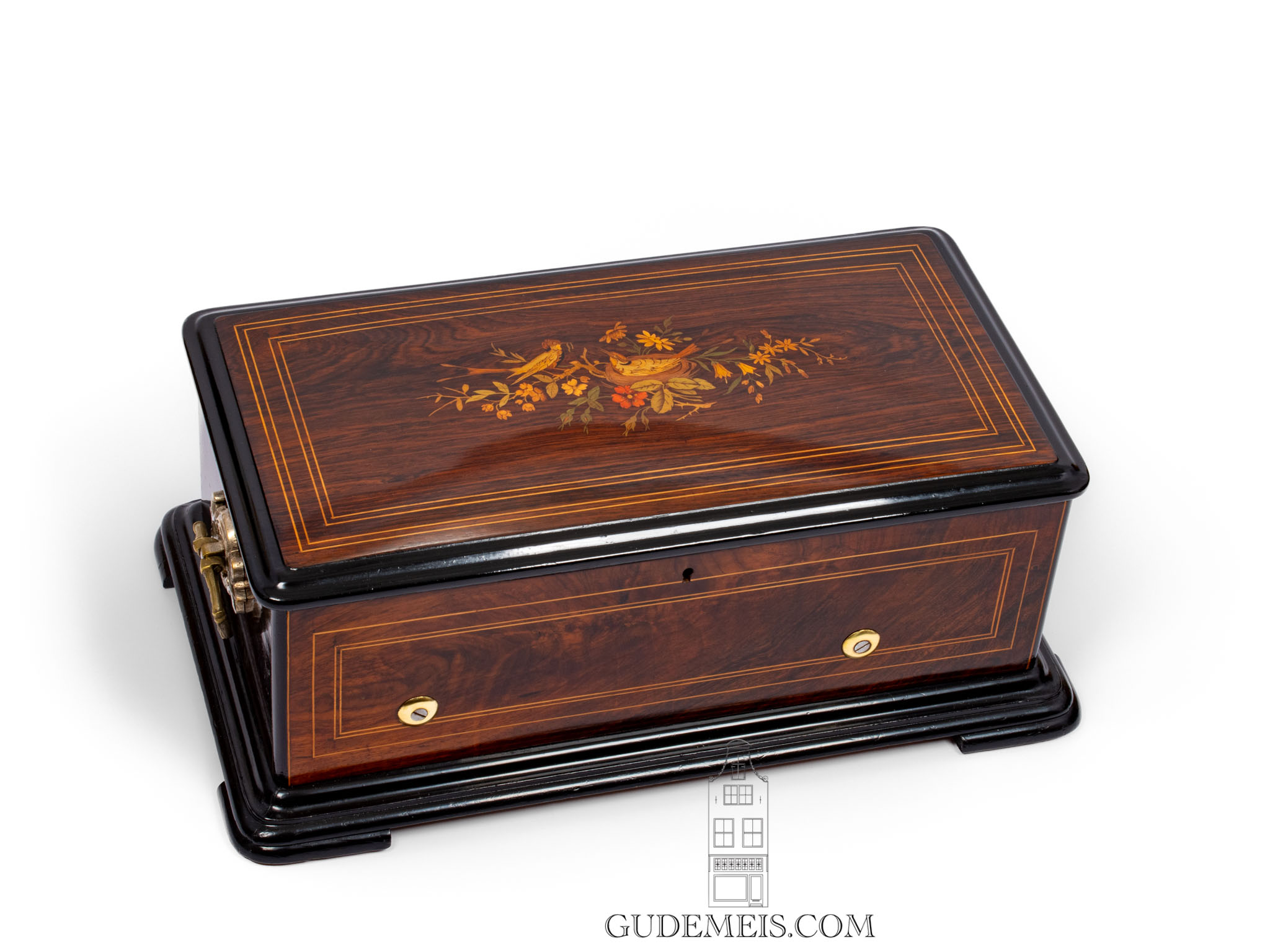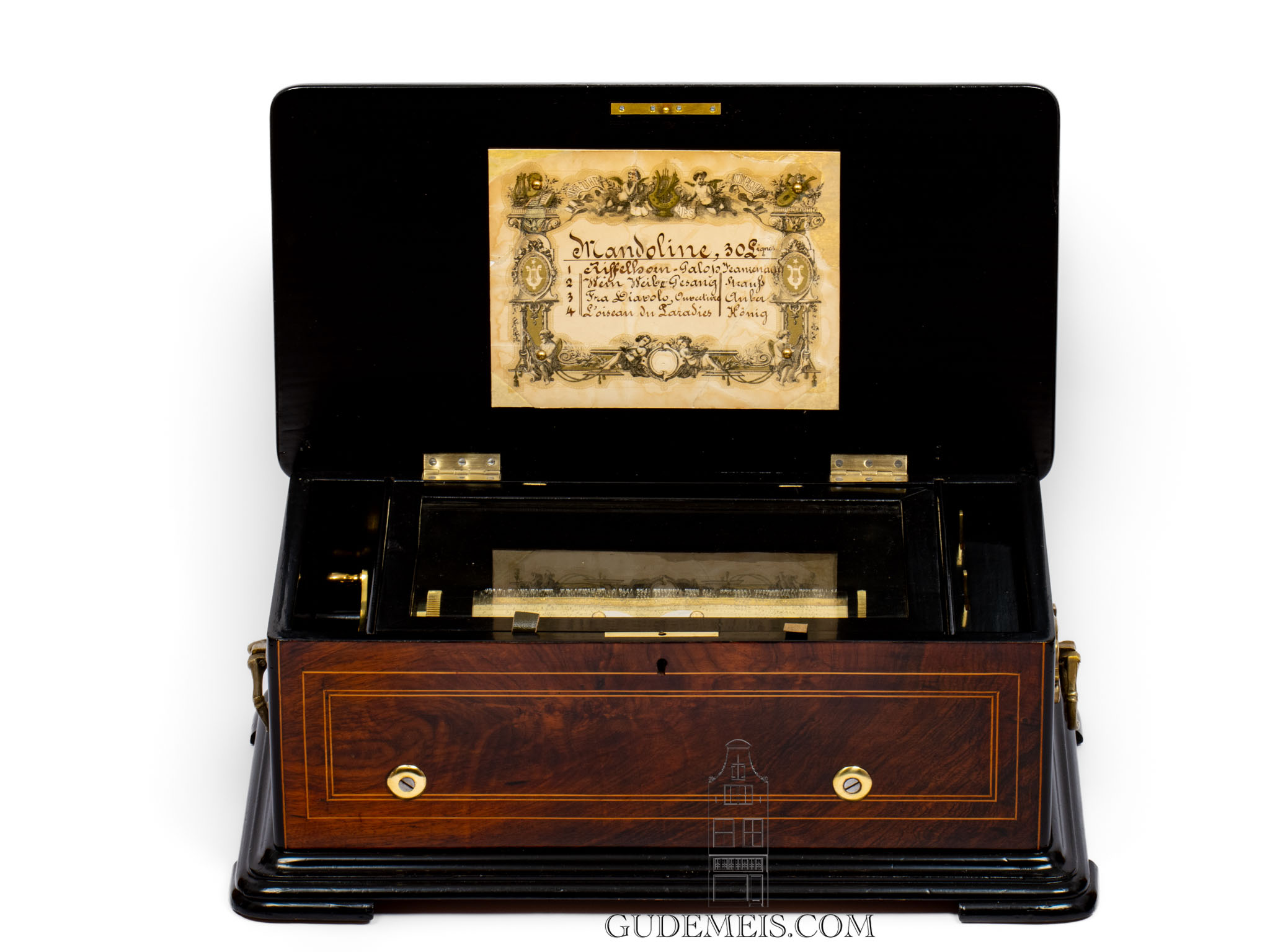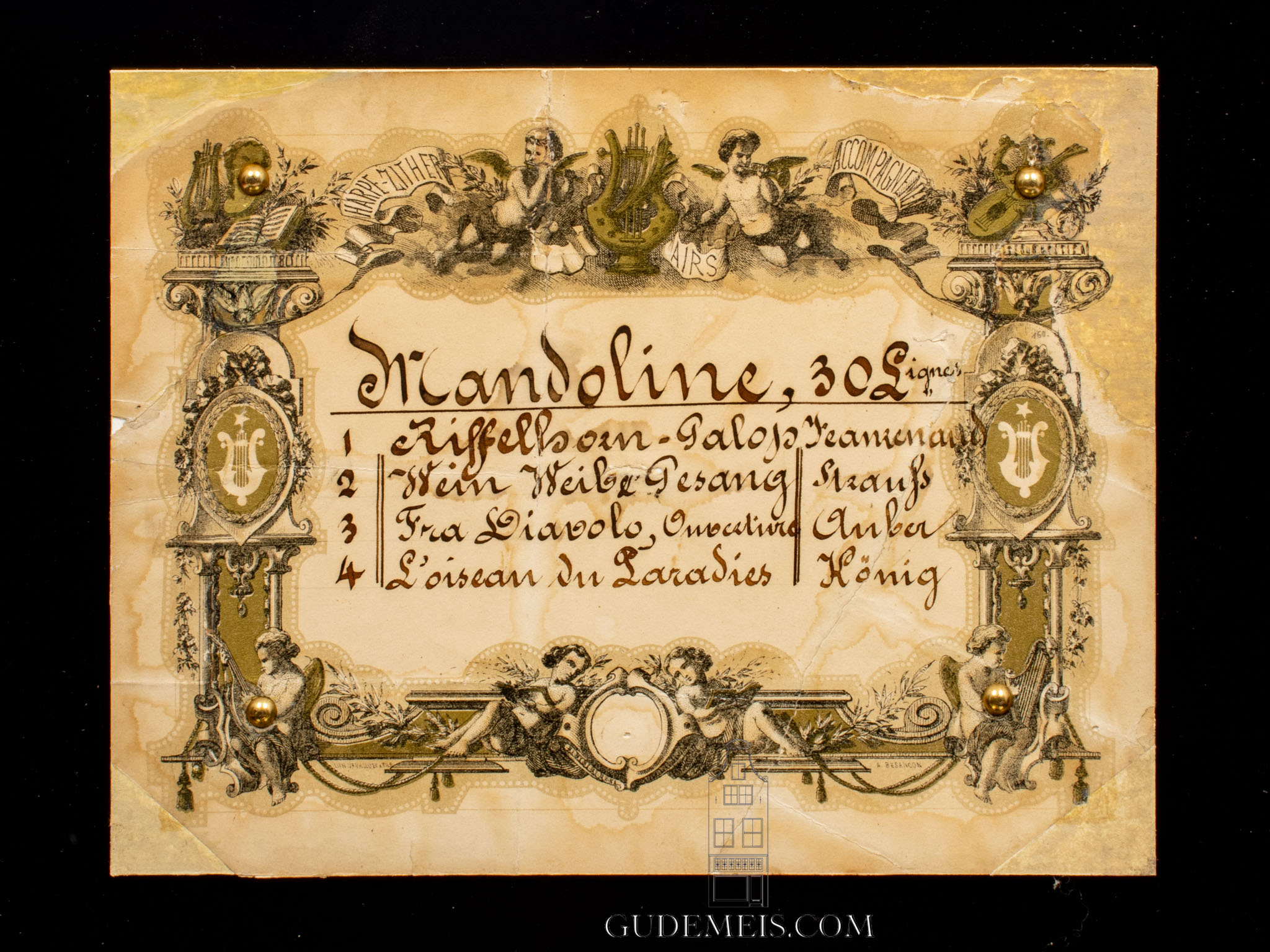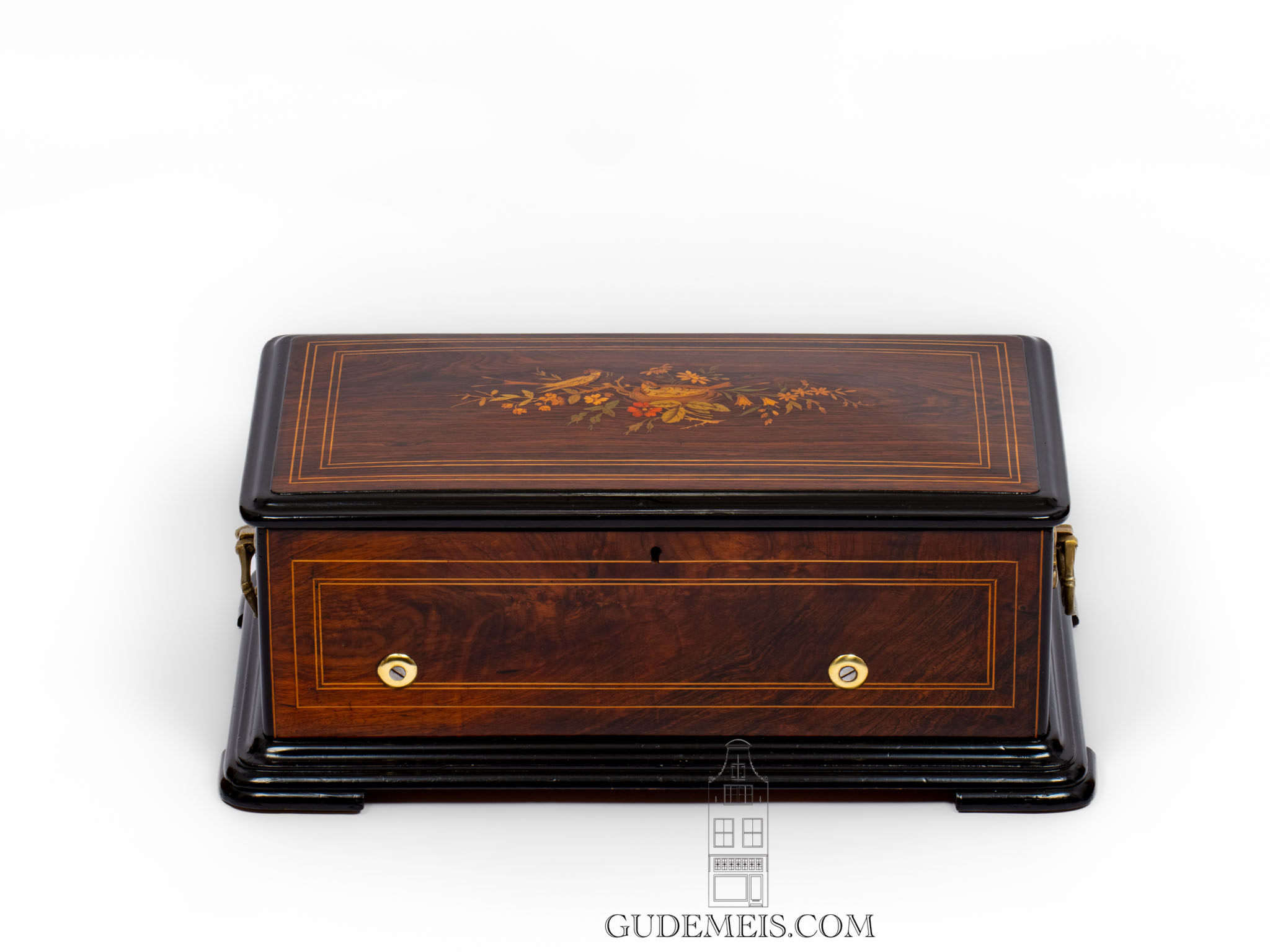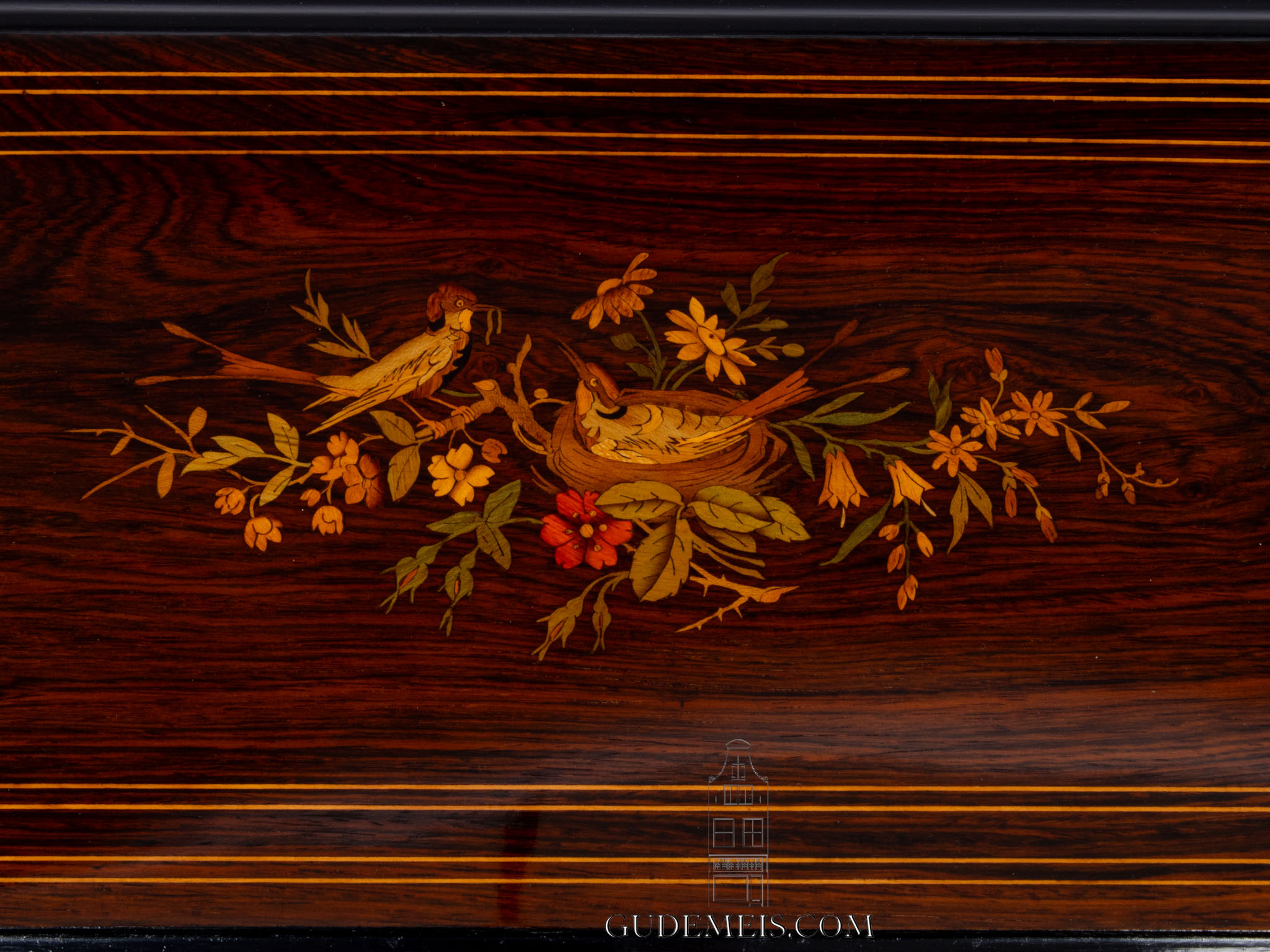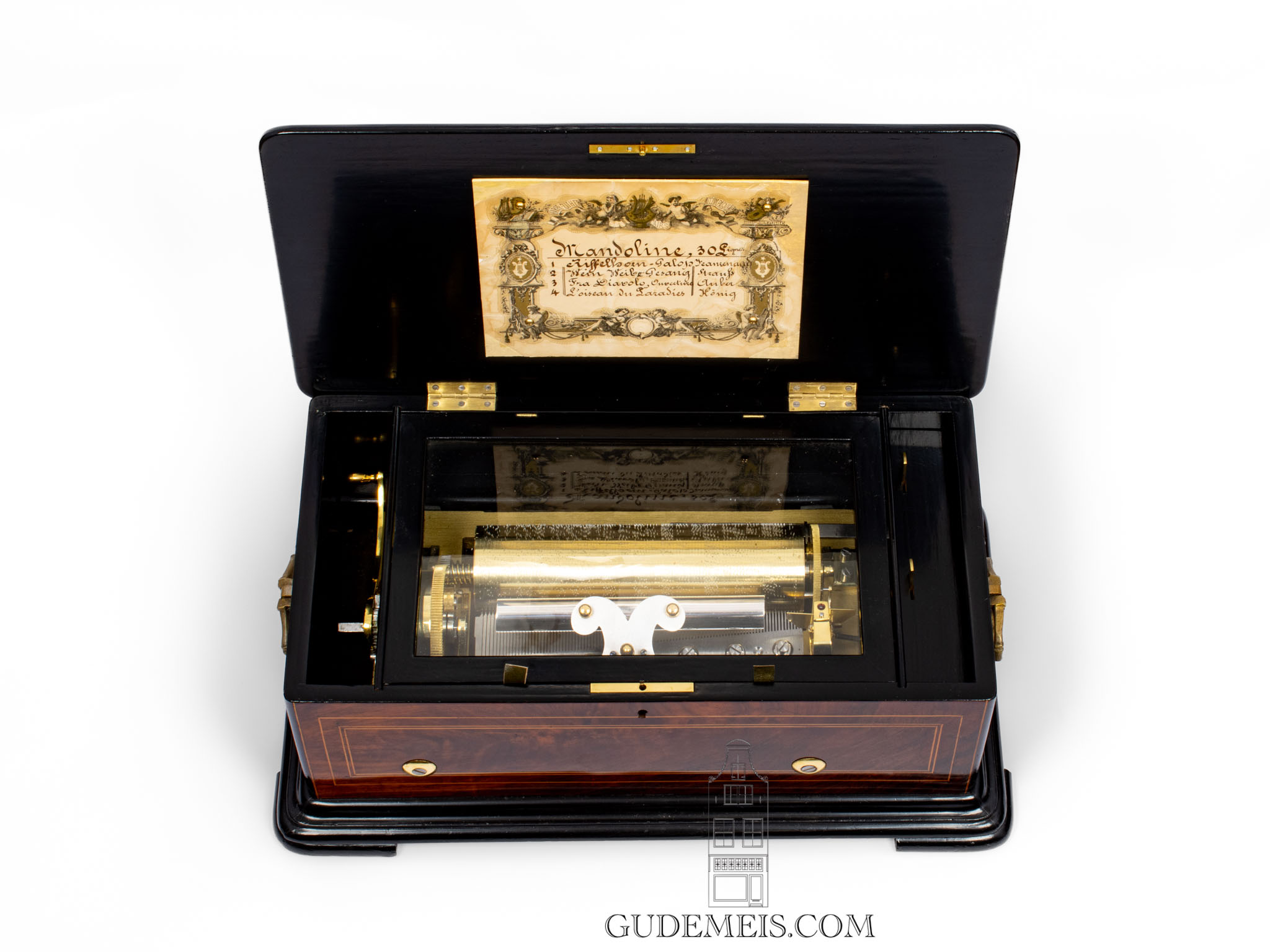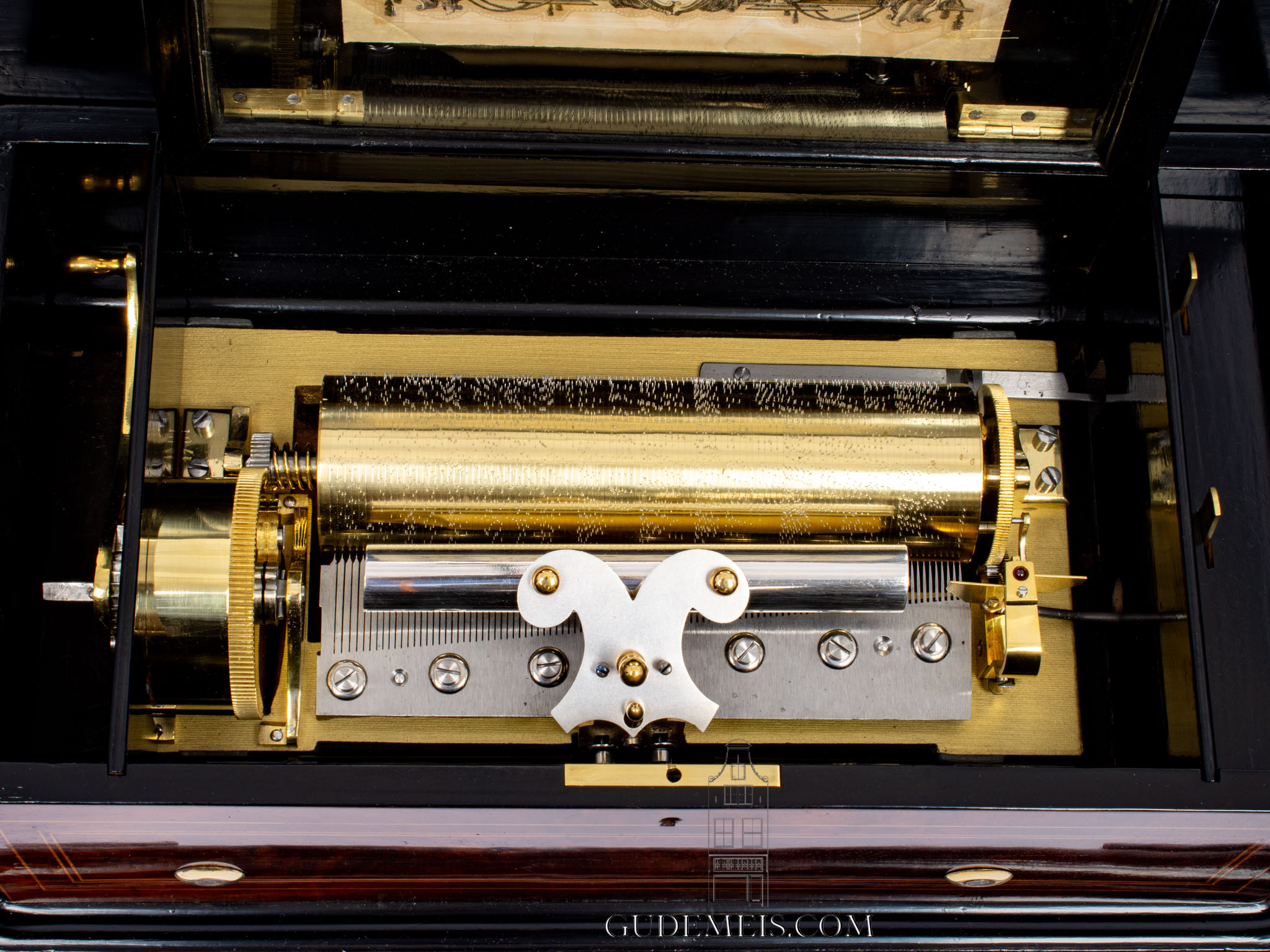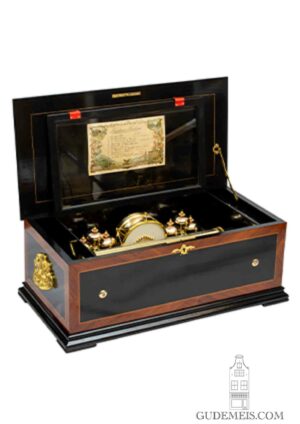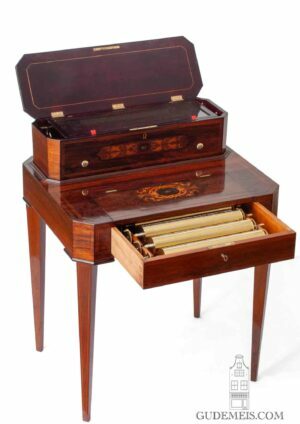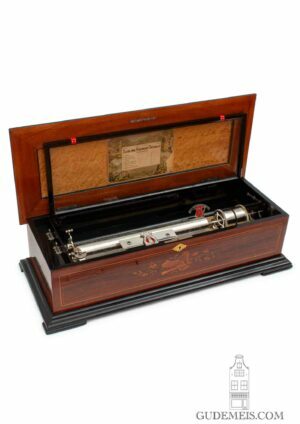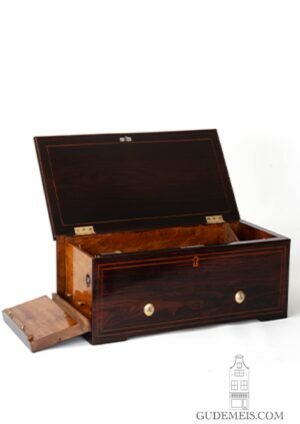An attractive Swiss marquetry inlaid cylinder music box by PVF, circa 1870.
Description
Ouverture
At first glance, one might think that a music box with four melodies would be less interesting than one with ten or twelve melodies. More arias seem better than fewer. But the more melodies there are, the further apart the teeth on the comb are. The smaller number of teeth means that the sound is less diverse and full. Logically, a music box with a thick cylinder plays longer than a music box with a thin cylinder. With a longer playing time, the maker can arrange a melody more beautifully. After all, there is more room to add nuances such as silences and tempo changes. Different parts of melodies can also be placed one after the other, just like the overture of a classical piece. It is not surprising that the combination of few melodies and a thick cylinder is popular with enthusiasts. The term “overture music box” is actually reserved for boxes that only play overtures. But this box, with its single overture and the mechanical characteristics of these sought-after instruments, comes very close. In any case, the sound is fantastic. Finally, the box looks beautiful with its attractive inlay on the lid and beautifully crafted handles. A feast for the eyes and ears.
The mechanism
The brass mechanism is driven by a spring barrel with a fixed winding handle. It plays four melodies with a 23.5 cm wide cylinder on a steel comb with zither. There are handles for start/stop and repeat/change (of the melodies).
Tune sheet
The tune sheet reads “Mandoline, 30 lignes”, which indicates the type and diameter.
Melodies;
1. Riffelhorn-Galop by Jeamenaud
2. Wein, Weib & Gesang by Strauss
3. Fra Diavolo, Overture by Auber.
4. L’Oiseau du Paradis by König.
Marquetry
The rosewood veneered lid has a marquetry ornament of birds and foliage. The front is veneered with mahogany and has inlaid banding. There are handles on the sides. The moulded base is raised on flat feet.
Paillard, Vaucher & Fils
The firm Paillard, Vaucher & Fils existed between approximately 1850 and 1914. They are known for their innovations in the field of interchangeable cylinder music boxes and sublime harmony music boxes. The firm is often referred to by the abbreviation PVF.
